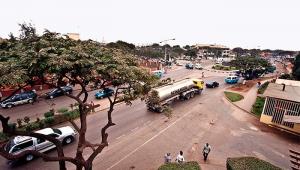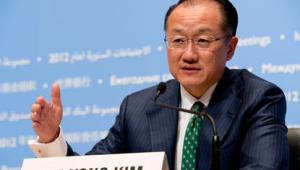
The bank said the decision was based on sluggish growth in advanced economies, “stubbornly low” commodity prices, weak global trade and diminishing capital flows.
Exporting emerging market and developing economies, which have struggled to adapt to the crash in prices for oil and other commodities, accounted for half of the downward revision in global growth.
In its Global Economic Prospects report, published yesterday, the bank slashed its forecast for these exporting economies to a meagre 0.4%, a 1.2 percentage point cut from its January outlook.
World Bank president Jim Yong Kim highlighted that economic growth remains the most important driver of poverty reduction, making the slowdown in these economies very concerning.
“It’s critically important for countries to pursue policies that will boost economic growth and improve the lives of those in extreme poverty,” he said.
Those emerging market and developing economies that are big importers of commodities should have profited from lower prices, however the bank said these benefits have been slow to materialise.
They too had their growth forecasts downgraded, but only to 5.8% compared to 5.9% predicted in January.
While India, currently the fastest growing major economy, is expected to see its growth remain a robust 7.6%, both Brazil and Russia are projected to remain in deeper recessions than forecast in January. China is forecast to grow at 6.7% – its slowest rate in seven years.
The bank predicted Latin America and the Caribbean is set to see its first back-to-back years of recession in more than three decades, with the region’s economy expected to contract by 1.3% in 2016 after a 0.7% decline last year.
Sub-Saharan Africa, the Middle East and North Africa and Europe and Central Asia all had their outlooks cut compared to January, with commodity prices, reduced or delayed investment, environmental factors and geopolitical concerns all bearing down on growth.
Rising investment in East Asia and the Pacific, particularly in large economies like Indonesia, Malaysia and Thailand and strong consumption in countries like Vietnam meant the region’s outlook was one the only one to remain unchanged since January, but this forecast assumes “orderly” progress in China.
According to the World Bank, South Asia remains the strongest region, with growth forecast to accelerate to 7.1% in 2016 thanks to resilient domestic demand and strengthening performance in India, Pakistan, Bangladesh and Bhutan.
But the bank warned that in an overall environment of anaemic growth, the global economy faces “pronounced risks”, including a further slowdown in emerging markets, a longer-than-expected period of low commodity prices, geopolitical risks and concerns about the effectiveness of monetary policy to be able to spur stronger growth.
The bank also warned of the risks of a significant increase in private sector credit, fuelled by an era of low interest rests and increasing financing needs.
“In the wake of a borrowing boom, it is not uncommon to find non-performing bank loans, as a share of gross loans, quadruple,” said World Bank chief economist and senior vice president Kaushik Basu.













